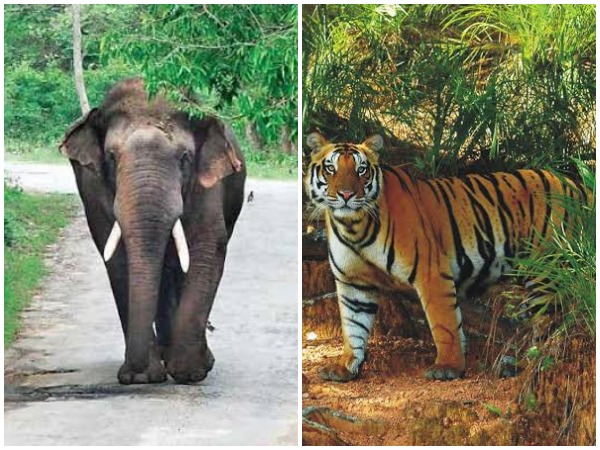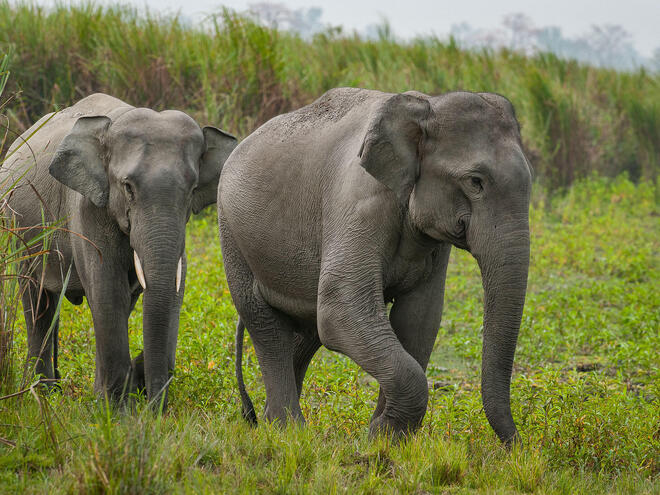Elephants, tigers main victims of rising human-animal conflict, Odisha leads in Elephant deaths

New Delhi, Sep 24 : Amidst the governments increased focus on conservation of wildlife, instances of human-animal conflict have resulted in loss of life of both humans and animals over the years.
As per the information from the Ministry of Environment and Forests, between 2018-19 and 2020-21, a total of 29 tigers were killed by poachers while the deaths of 197 tigers was under scrutiny. A large number of elephants also died due to various reasons including electrocution and others. The data said that a total of 222 elephants died by electrocution across the country, 45 in train collisions, 29 were killed by poachers and 11 by poisoning during the same period.

On the other side, a large number of humans also became victims of the conflict leading to their deaths. Elephants killed 1,579 humans in three years – 585 in 2019-20, 461 in 2020-21, and 533 in 2021-22. So far as the states are concerned, Odisha recorded the highest number of these deaths at 322, followed by Jharkhand at 291, West Bengal at 240, Assam at 229, Chhattisgarh at 183 and Tamil Nadu at 152.
So far as the deaths of elephants are concerned, out of the 222 elephant deaths caused by electrocution, Odisha recorded 41, Tamil Nadu 34 and Assam 33. Odisha (12 out of 45) also had the highest number of elephant deaths caused by trains, followed by West Bengal (11) and Assam (9). Poaching deaths were the highest in Meghalaya (12 out of 29) while poisoning deaths were the highest in Assam (9 out of 11, including 8 in 2018-19 alone).

The Ministry in a Parliament reply on July 25 said that assessments of human-wildlife conflicts indicate that their main causes include habitat loss, growth in the population of wild animals, changing cropping patterns that attract wild animals to farmlands, movement of wild animals from forest areas to human dominated landscapes for food and fodder, movement of human beings to forests for illegal collection of forest produce, habitat degradation due to growth of invasive alien species and others.
The Parliament standing committee on Environment and Forests in its March, 2022 report took note of the human-animal conflict observing that the cases of man-animal conflict are on the rise and it still remains an area of concern. “As such, there is an urgent need to minimize the instances of man-animal conflict that was resulting in both human and animal killings,” it said.
The Committee recommended that the Ministry should take proactive steps to sustainably manage and minimise man-animal conflict in a balanced manner, whereby the wildlife habitat is improved. “The Committee urges upon the Ministry to evolve a mechanism at the national level for uniform compensation, early settlement of compensation and rehabilitation of the victims of man-animal conflict. The Committee recommends that efforts should be made by the Ministry at local level and especially among the communities living in peripheral forest areas to sensitise them towards ecological balance through co-existence with wildlife,” it said.
As per the Ministry, financial assistance is provided by the Ministry to States/Union Territories under the centrally sponsored schemes of Development of Wildlife Habitats’, Project Tiger’ and Project Elephant’ for activities like creation and maintenance of water holes for wild animals in the protected areas, soil and moisture conservation measures, establishment of anti-poaching camps, strengthening wildlife veterinary care, eradication of weeds, creation and maintenance of fire lines, deployment of Tiger Protection Force and others.
Critical elephant habitats are notified as Elephant Reserve’ for focus and synergy in elephant conservation and to reduce conflict. The notification is carried out with the approval of the Steering Committee formed in the Ministry. So far 31 Elephant Reserves have been established in 14 major elephant states.
Similarly, the National Tiger Conservation Authority has issued Standard Operating Procedures to deal with emergencies arising due to straying of tigers into human dominated landscapes and tiger depredation on livestock and for active management towards rehabilitation of tigers from source areas at the landscape level.






